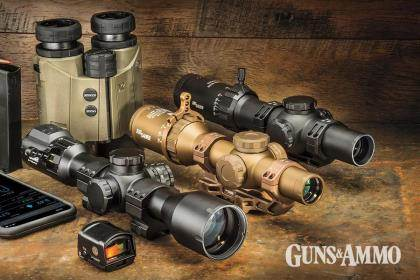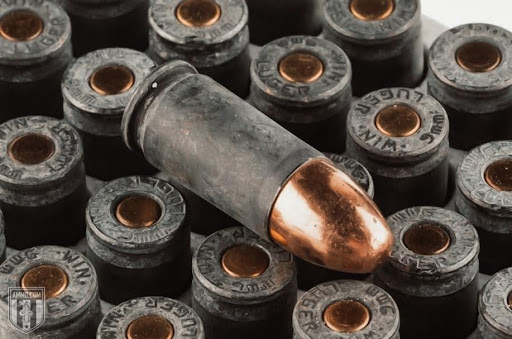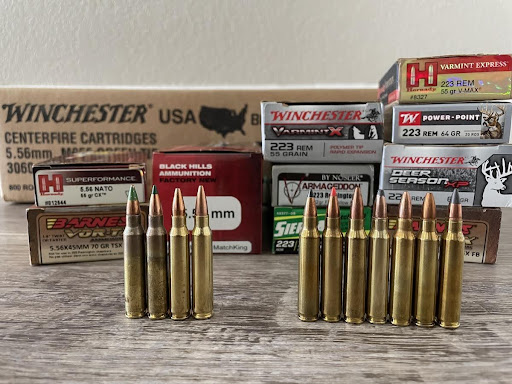Introduction
Understanding bullet types can make a huge difference in performance, accuracy, and
safety when shooting. Ammunition isn’t just about caliber — the shape, material, and
design of a bullet have a major impact on what happens from the moment you pull the
trigger to when the bullet reaches its target. Choosing the right bullet type depends on what
you are trying to do: target practice, hunting, or pest control. Each bullet type offers
strengths and trade-offs that shooters should know before heading to the range or field.
This guide breaks down five of the most common bullet types found today: Full Metal
Jacket (FMJ), Jacketed Hollow Point (JHP), Jacketed Soft Point (JSP), Solid Copper, and
Frangible. There is no politics here — just straightforward ballistics and practical use casesto help shooters make informed decisions.
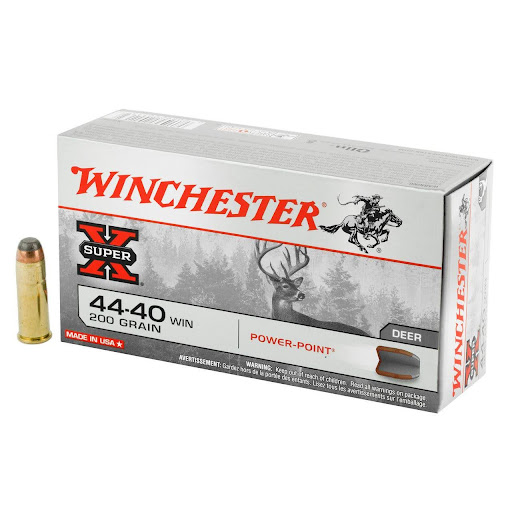
✅ What Matters When Comparing Bullet Types?
Every bullet is designed with a specific purpose in mind. Here are core performance factors:
- Penetration — How deeply the bullet travels into a target.
- Expansion — How much the bullet widens upon impact.
- Barrier performance — How well it performs through materials like clothing, drywall, or bone.
- Accuracy — Stability and predictability in flight.
- Cost — Training and hunting budgets matter.
- Environmental considerations — Some designs reduce lead exposure.
- No bullet does everything perfectly. Designers must balance these traits based on the intended role.
Now, let’s break down each bullet type in detail.
What it is:
A lead core completely wrapped in a harder metal jacket, usually copper. The tip is rounded or pointed, with no opening.
Primary Use: Practice and training
Key Performance Traits
| Trait | Result |
|---|---|
| Penetration | High — tends to pass completely through targets |
| Expansion | Very low (usually none) |
| Barrier performance | Strong penetration through light materials |
| Accuracy | Excellent and consistent |
| Cost | Typically the least expensive option |
FMJs are popular for their affordability and reliability. Most indoor and outdoor training is done with FMJ rounds because they feed smoothly in semi-automatic firearms and allow shooters to practice without spending too much.
Pros
- Most economical option
- Great for high-volume range shooting
- Reliable feeding and consistent accuracy
Cons
- Minimal stopping power due to no expansion
- Risk of over-penetration, meaning the bullet keeps going beyond the target — a safety concern in defensive situations
Summary: FMJ is for punching holes in paper targets or ringing steel plates — not for controlling living targets.
Jacketed Hollow Point (JHP)
What it is:
A bullet with a hollow opening in the nose. On impact, that cavity forces the bullet to expand outward, like a mushroom.
Primary Use: Self-defense and hunting where rapid stopping power is needed
Key Performance Traits
| Trait | Result |
|---|---|
| Penetration
| Moderate — controlled depth |
| Expansion | Significant — wide wound channel |
| Barrier performance | Modern designs improve performance through clothing |
| Accuracy | Good, though slightly more expensive |
| Cost | Higher than FMJ |
Expansion slows the bullet inside the target, transferring more energy. That prevents unwanted pass-through and helps stop threats or animals quickly and humanely.
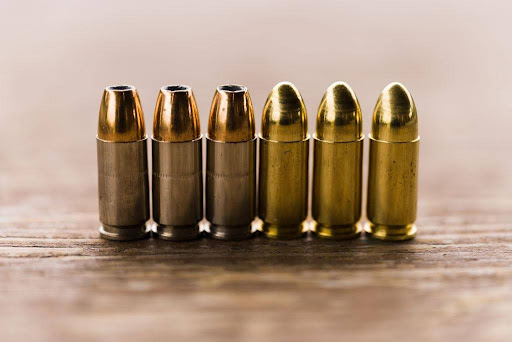
Pros
- Strong terminal performance (rapid energy transfer)
- Reduced risk of over-penetration
- Widely available for defensive gear
Cons
- Higher cost than FMJ
- Not preferred for deep penetration through heavy materials
Summary: JHP is engineered to stop something quickly without travelling too far — ideal for defensive applications or small-to-medium game.
Jacketed Soft Point (JSP)
What it is:
A bullet with a copper jacket but exposed soft lead tip. It expands on impact — though not as aggressively as JHP.
Primary Use: Hunting medium-to-large game
JSP strikes a balance between FMJ and JHP. It generates enough expansion for controlled damage, while still penetrating deeply to reach vital organs in larger animals.
Key Performance Traits
| Trait | Result |
|---|---|
| Penetration | Deep — better for thick-skinned animals |
| Expansion | Moderate but reliable |
| Barrier performance | Strong against bone and tissue |
| Accuracy | Good, especially at typical hunting distances |
| Cost | Mid-range |

Pros
- Excellent for hunting deer, hogs, and similar size animals
- Predictable, controlled expansion
- Better at penetrating through bone than JHP
Cons
- Less ideal for self-defense due to risk of over-penetration
- Slightly more expensive than FMJ for range use
Summary: JSP is the hunter’s workhorse — reliable damage, deeper penetration, and humane results on larger game.
Solid Copper (Monolithic) Bullets
What they are:
Bullets machined from a single piece of copper or copper alloy — no lead core. Many modern versions feature hollow point designs for expansion.
Primary Use: Hunting and reducing lead contamination
Lead-free requirements in some areas made solid copper bullets more common, but they’ve earned a strong reputation for performance.
Key Performance Traits
| Trait | Result |
|---|---|
| Penetration | Very deep; retains nearly 100% weight |
| Expansion | Effective in controlled hollow point versions |
| Barrier performance | Exceptional — punches through heavy bone |
| Accuracy | Often highly accurate due to consistent manufacturing |
| Cost | Higher price point |
Copper is less dense than lead — meaning these bullets are slightly longer for the same weight. This helps with stability and accuracy but mamagazine
capacity in some situations.
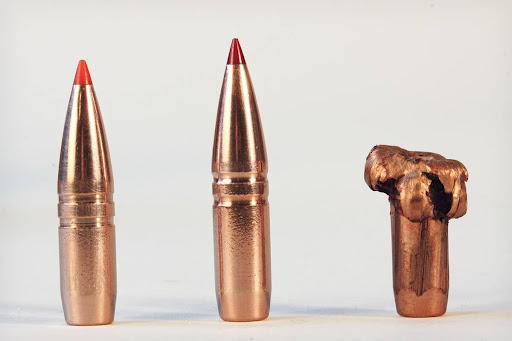
Pros
- No toxic lead exposure or fragments left in meat
- High durability and retained weight for big game
- Legal everywhere, works well in tough environments
Cons
- Higher cost
- Can produce more barrel friction and wear in some older firearms
Summary: Solid copper shines in hunting and precision shooting, especially where lead contamination is a concern.
Frangible Bullets
What they are:
Bullets made from compressed copper or other powdered metals that break apart on impact with hard surfaces.
Primary Use: Close-quarters training and specialized safety situations
These bullets dramatically reduce the risk of ricochet or over-penetration, making them valuable for shooting in confined areas, steel-target drills, and law-enforcement training facilities.
Key Performance Traits
| Trait | Result |
|---|---|
| Penetration | Minimal — disintegrates on impact |
| Expansion | Not designed for flesh; breaks into fragments on hard targets |
| Barrier performance | Poor against thick materials |
| Accuracy | Good at short distances |
| Cost | Higher than FMJ, varies by brand |
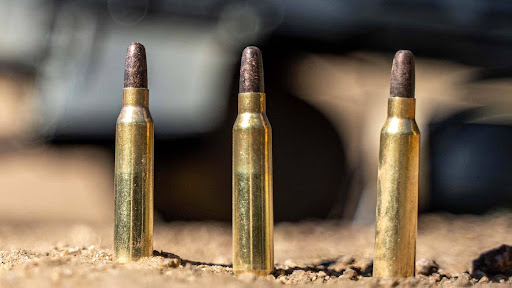
Pros
- Greatly reduces ricochet risk
- Safer for shoot house and steel plate practice
- Lead-free options available
Cons
- Not intended for deeper penetration or hunting
- Less consistent at long distances
Summary: Frangible bullets are engineered for safe training where bullet containment is critical.
Which Bullet Should You Choose? Quick Guide
| Purpose | Best Choice | Why |
|---|---|---|
| Target practice | FMJ | Affordable and accurate |
| Personal defense | JHP | Stops threats quickly with less risk of pass-through |
| Hunting medium-large game | JSP or Solid Copper | Deep penetration with expansion |
| Indoor CQB training / steel targets | Frangible | Breaks apart to reduce danger |
There’s no single “best” bullet — there is only the right bullet for the task.

Safety and Responsibility
Choosing the right bullet type ensures:
- Better performance
- Safer shooting environments
- Ethical and humane results when hunting
- Reduced risk of stray rounds or ricochets
Proper backstop, target setup, and awareness of what lies beyond your target are always required, no matter the bullet type.
Construction & Materials — a closer look
Bullets are simple in concept but the small changes in design and materials make big differences in behavior.
- Lead core: Most traditional bullets use a soft lead core because it’s dense and molds predictably on impact. A lead core behind a jacket (or exposed at the tip) controls weight and center of mass.
- Copper jacket: Thin copper or copper-alloy jacket improves feeding in semi-autos, reduces barrel leading, and controls expansion. Jackets are commonly electroplated or drawn.
- Monolithic (solid) copper: Machined or swaged from one piece. Keeps almost all its weight on impact, fragments less, and is lead-free.
- Powdered-metal frangible: Pressed and sintered metal powders (copper, tin, other alloys). Engineered to disintegrate under high shear/impact.
- Bonding: Some jacketed bullets have the jacket chemically or mechanically bonded to the core so the bullet stays intact at high velocity. Bonded bullets resist fragmentation and retain weight for deeper penetration
How bullets perform on impact — the mechanics
Understanding the mechanical sequence helps you choose:
- Initial contact: Bullet meets the target — cloth, flesh, or barrier. The nose design determines how force is applied.
- Deformation / expansion: Hollow points open, soft points mushroom, frangibles break apart on hard surfaces. Expansion increases frontal area and creates a larger wound channel.
- Penetration & energy transfer: Bullets lose kinetic energy as they do work on tissue. Deeper penetration transfers energy deeper; expansion transfers energy faster and nearer the entry.
- Fragmentation & wound cavity: Some bullets fragment, creating multiple wound tracks; others maintain integrity creating one clean path. Temporary cavity effects (tissue displacement) depend on velocity and bullet design; permanent cavity is the actual tissue destroyed.
Performance expectations & testing
Manufacturers typically publish expected expansion and retained weight, but real-world performance varies with velocity and hits on bone. Common testing methods:
- Ballistic gelatin (10%): Standard for comparing expansion and penetration. Results vary by velocity (pistol vs rifle), and by whether bullet hits bone or passes through clothing.
- Barrier tests: Fabric, drywall, glass, and auto-glass tests show how the bullet behaves through real-world obstacles.
- Chronograph data: Velocity at the muzzle (and at distance) matters — many bullets are tuned for a typical velocity band; outside that band they might under- or over-expand.
Typical expectations (qualitative):
- FMJ: deep, consistent penetration; little expansion.
- JHP: expansion within a recommended velocity range; designed to limit penetration to an effective depth while maximizing energy transfer.
- JSP: moderate expansion with deeper penetration than JHP.
- Solid copper: deep penetration with controlled expansion (if hollow-point style).
- Frangible: minimal penetration on soft targets; disintegration on hard surfaces.
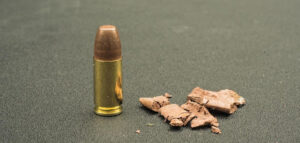
Conclusion
Bullet design is a key part of ballistics. FMJ, JHP, JSP, solid copper, and frangible bullets are each crafted to excel in different roles:
- FMJ keeps practice affordable and reliable.
- JHP protects against over-penetration while maximizing stopping power.
- JSP offers the penetration hunters need for bigger game.
- Solid copper delivers excellent structural integrity and clean shooting.
- Frangible enhances safety in confined training spaces.
Understanding what each bullet does empowers shooters to choose wisely rather than guessing from a box label. When the ammunition matches the mission, performance improves — and everyone stays safer.


